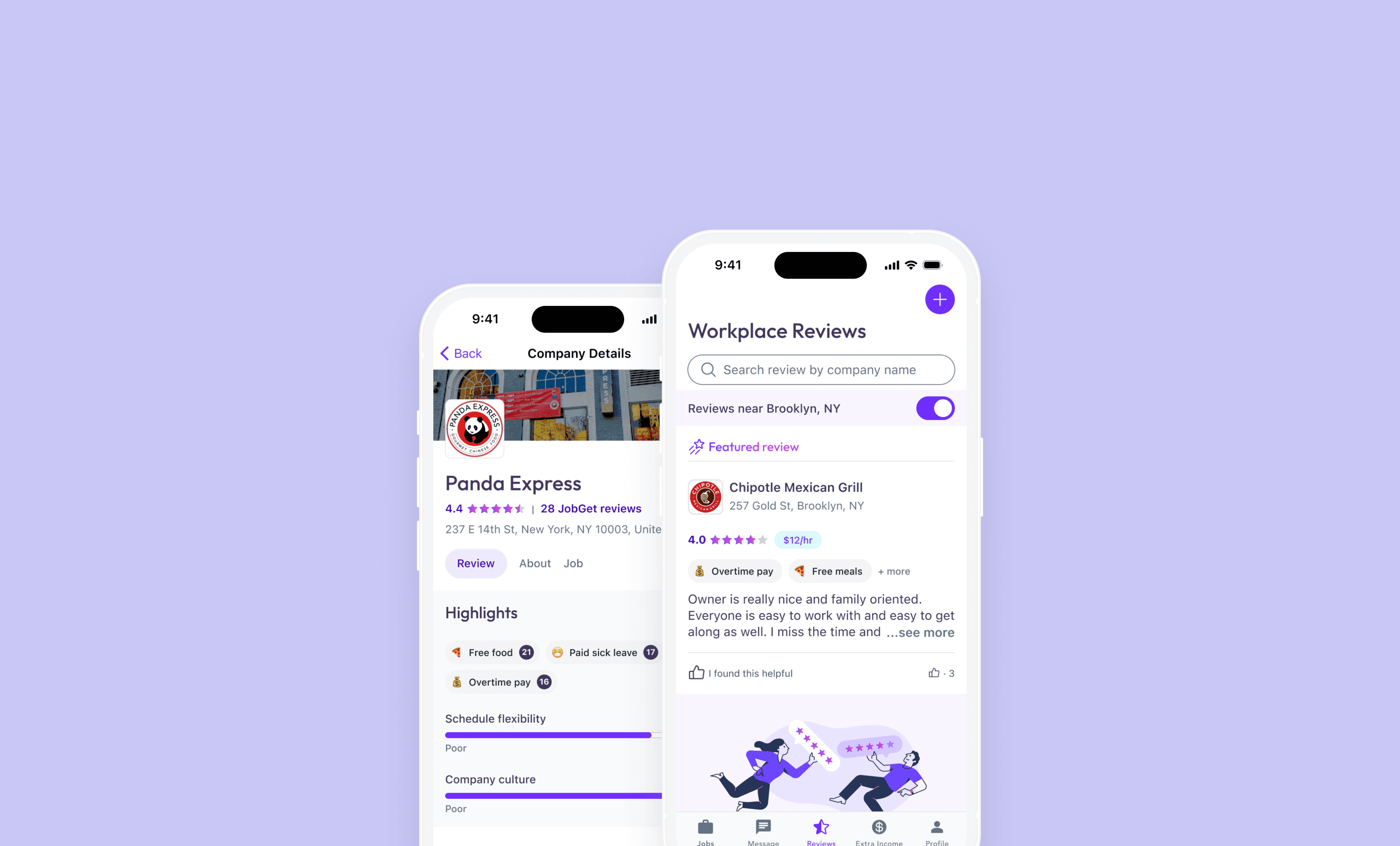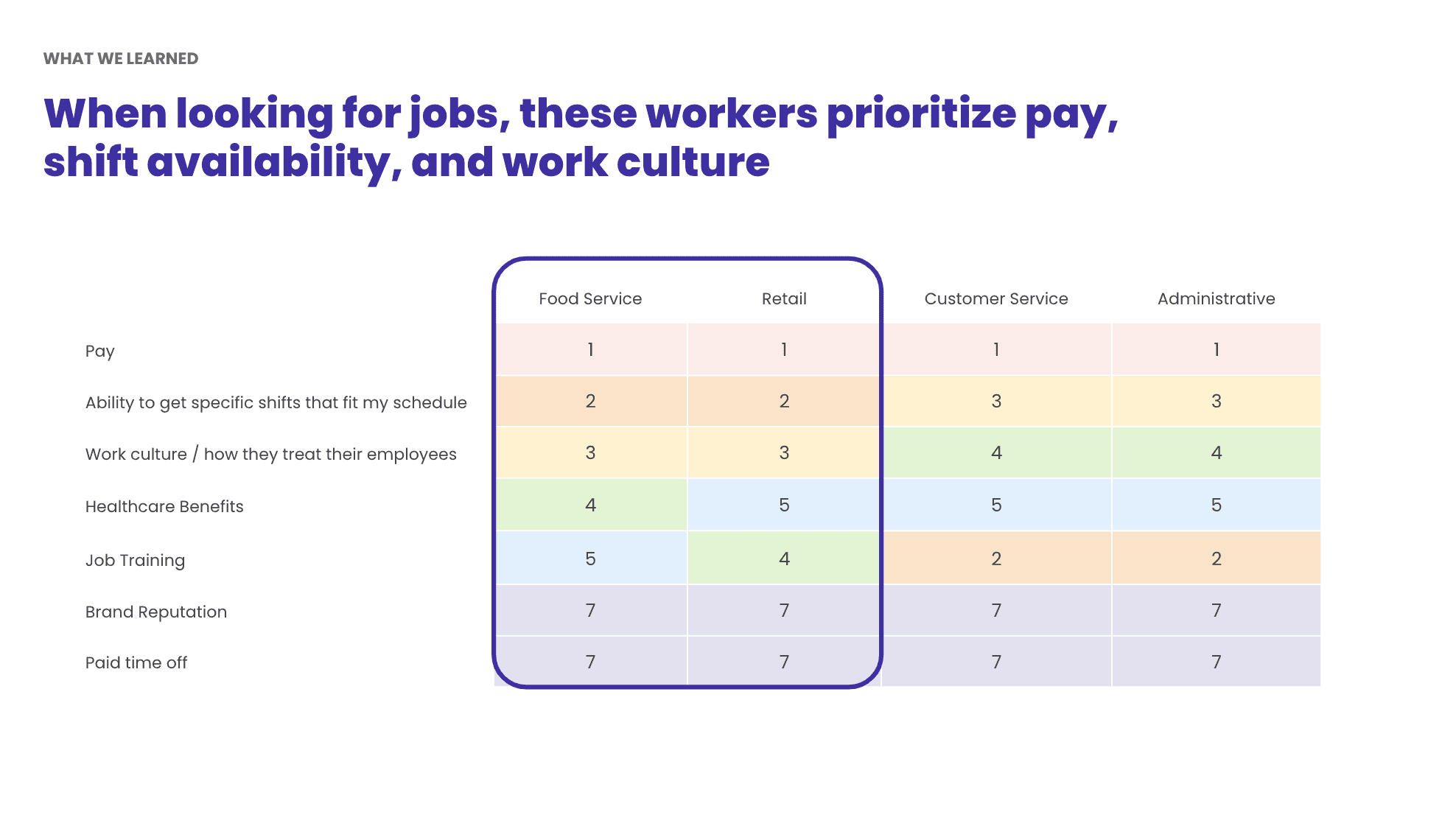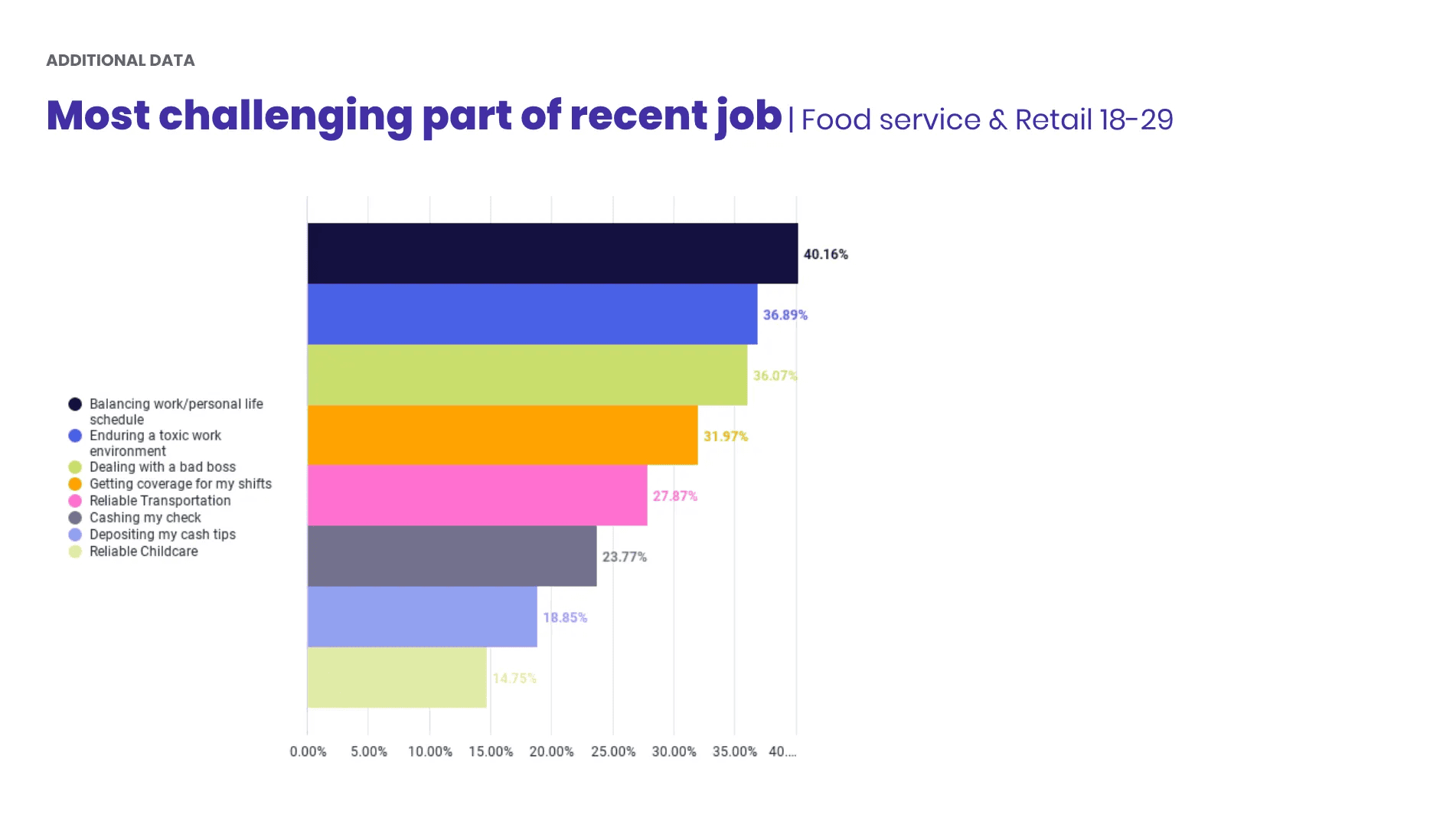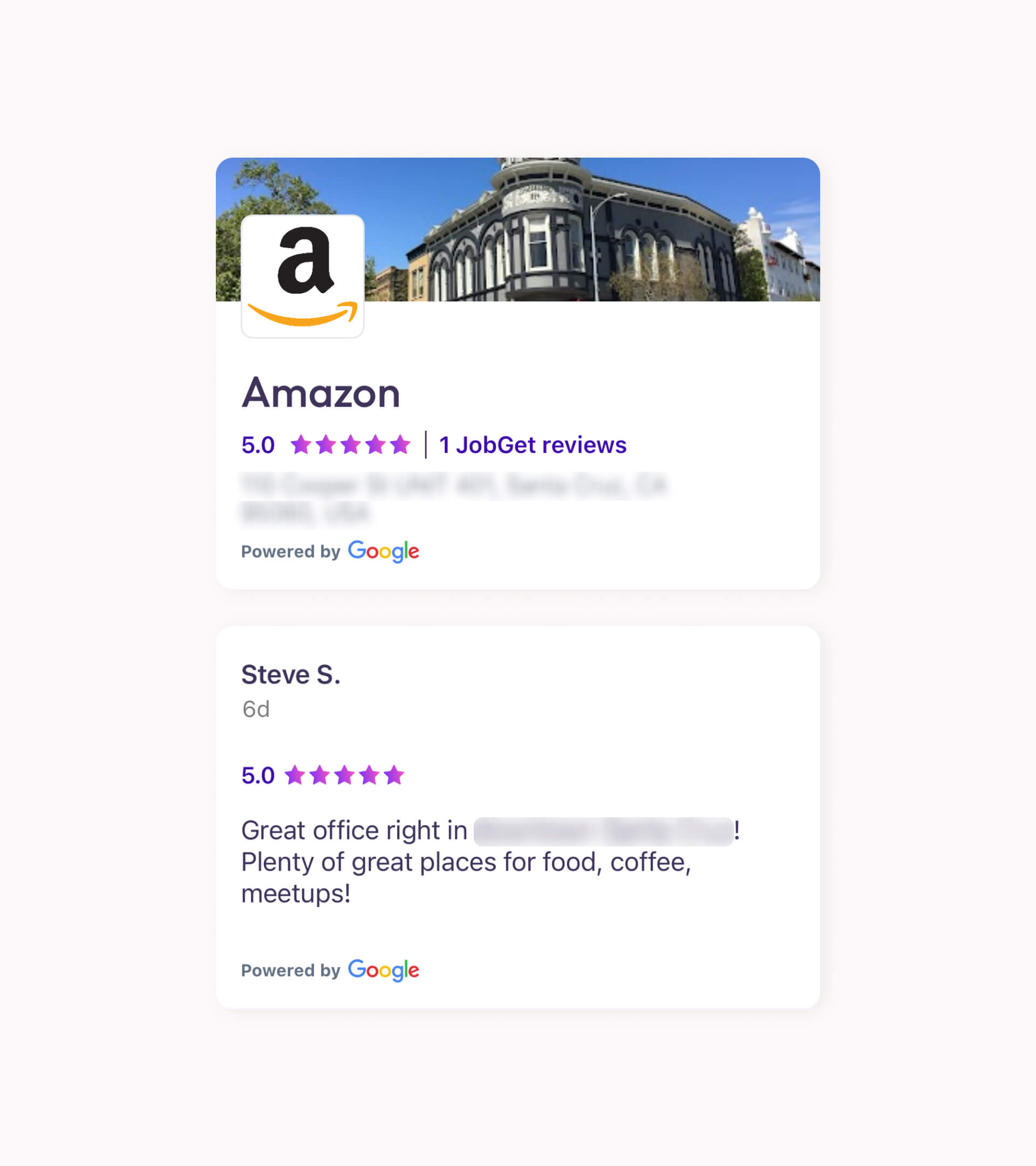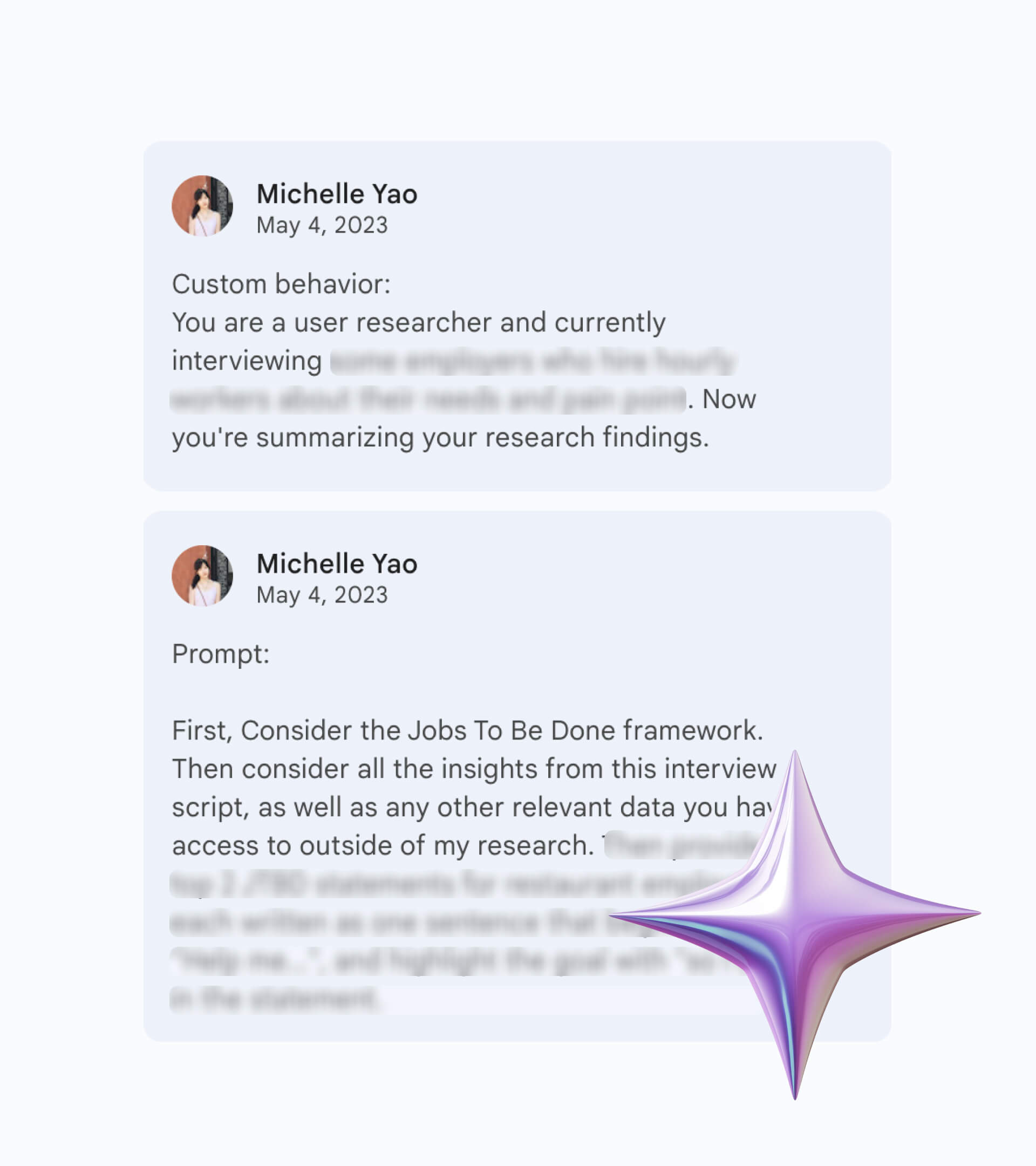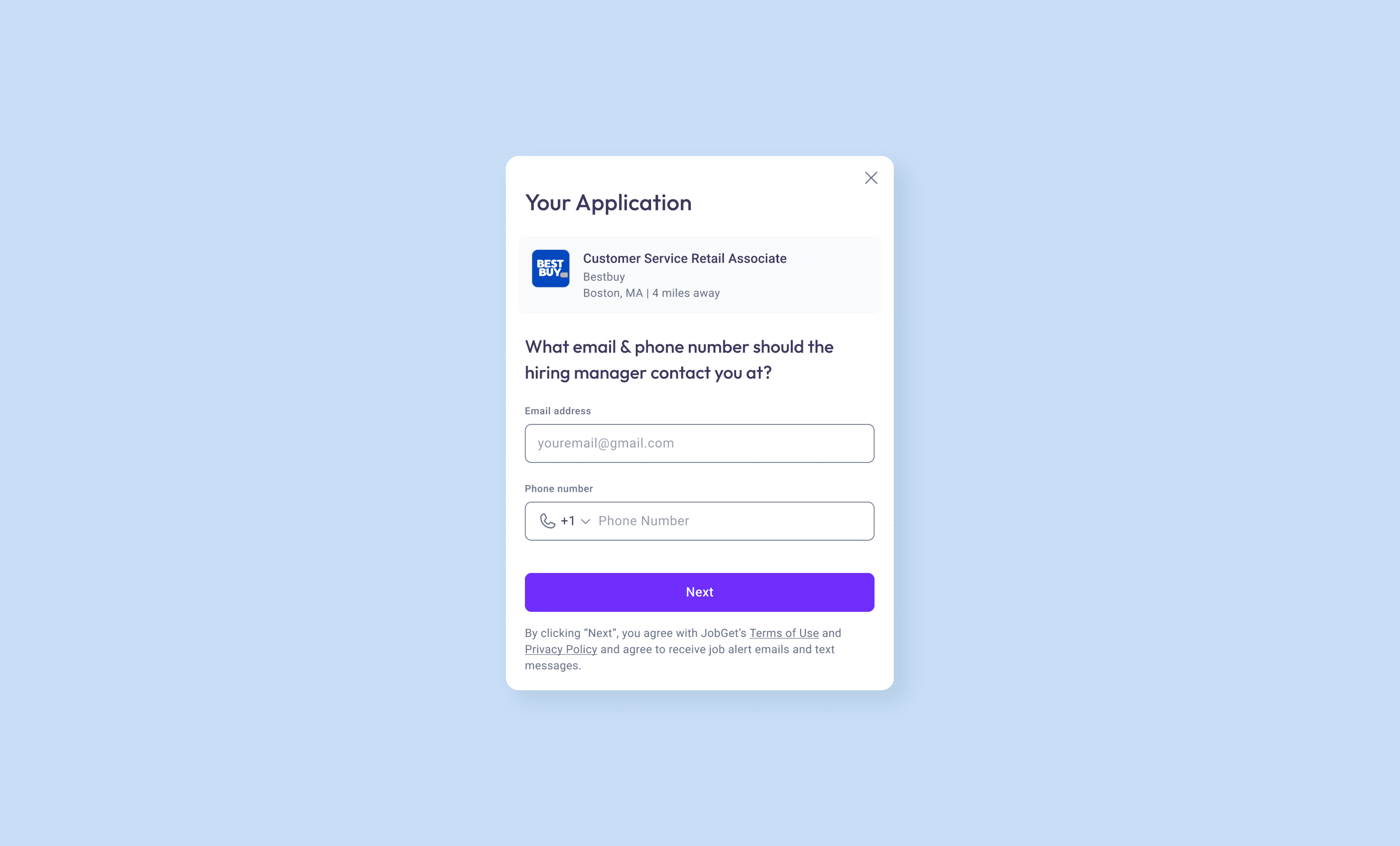Workplace Review
Company
JobGet Inc.
Timeline
Q3 2023 - Q1 2024
Your next better job starts from here.
Stop chasing scattered information about work culture. Discover honest employee experiences, transparent hourly rates (plus tips), and full benefit details—all in one place with JobGet.
The craving for a healthy, positive work environment
In Spring 2023, the design team at JobGet led a two-week design sprint with over 20 team members and stakeholders , with the mission to reimagine how JobGet could better support hourly workers.
We kicked off the sprint by surveying more than 900 hourly workers across the U.S. among our most valuable cohort (ages 18–30 across four industries)and uncovered key insights:
Work culture ranked as the third most important factor when searching for a new job - and it was also cited as one of the top challenges they face in their current roles.
The silent struggle of Hourly Workers
However, there are huge gaps between the ideal world and the reality:

Scattered information
While office workers have platforms like Glassdoor, Fishbowl, and Blind to access honest employee feedback, hourly workers often rely on piecing together information from customer reviews on Google, personal networks, or scattered posts on social media.

Difficulties to find “hyper-local” reviews
"Usually there are only customer reviews on Google. Or I might find someone sharing their experience on reddit—but it’s not the same store."
- Jose, a cashier at Target in San Diego, during a design sprint interview. This highlighted the difficulty in finding location-specific, relevant feedback.

